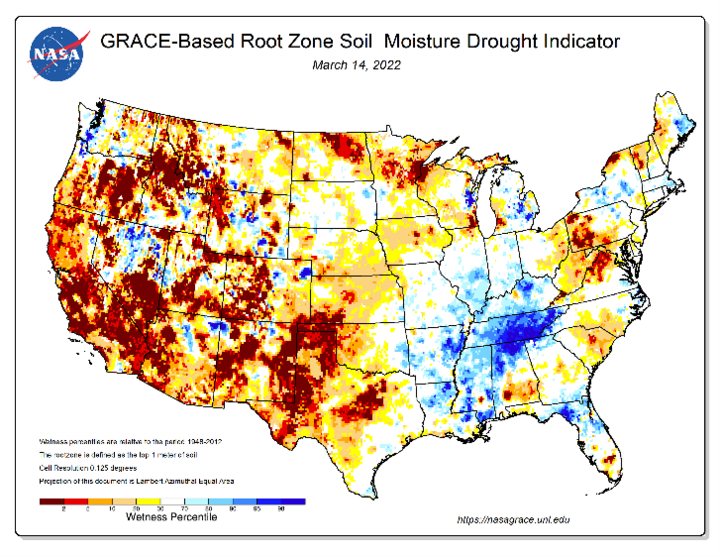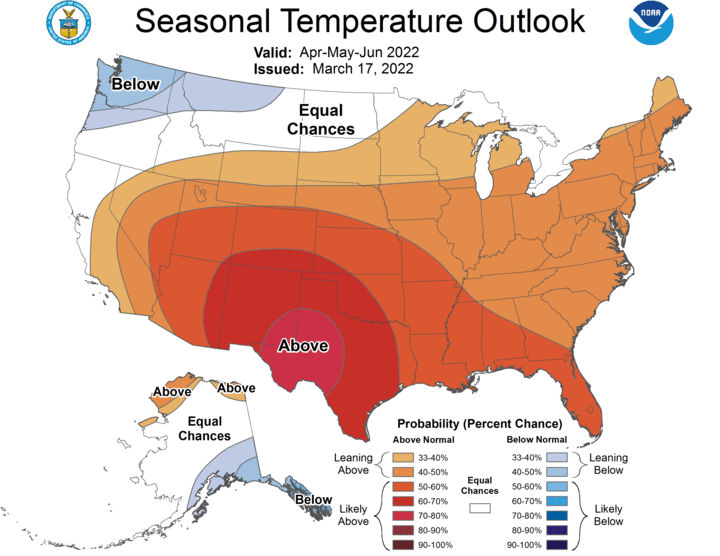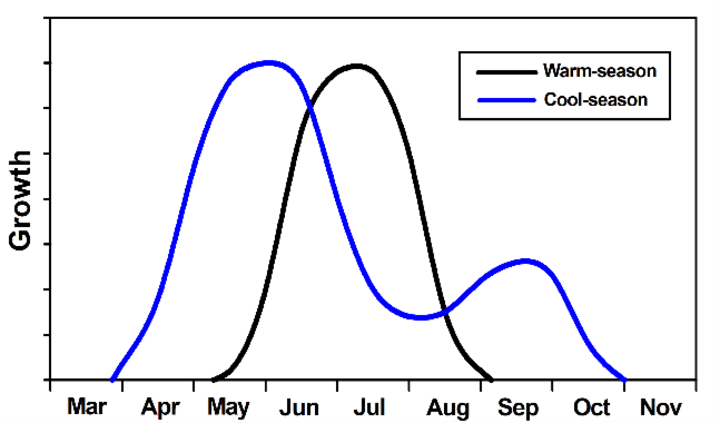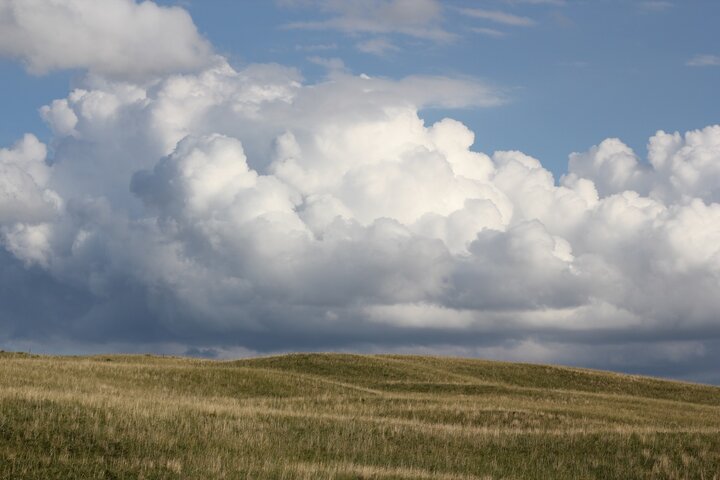A dry year last year and little moisture so far this year has led to depleted soil moisture conditions for much of the state. With National Weather Service forecasts showing a likely warmer than normal summer for Nebraska, combined with current low soil moisture, we do need to think about planning for dry conditions through the growing season. (See Figures 1-3)

Figure 1. ACIS Climate Map from the High Plains Climate Center showing percent of normal precipitation since October 1 for Nebraska as of March 8, 2022.

Figure 2. Drought indicator based on satellite data showing moisture conditions in the top 3 feet of soil as of March 14, 2022. Map from NASA Grace data: https://nasagrace.unl.edu/.

Figure 3. Map from NOAA Climate Prediction Center showing the probability of above normal temperature for the United States April through June 2022.
Pasture and native rangeland forage production fluctuates greatly through time due to precipitation, temperature, range health, and soil nutrients. The amount and timing of spring and early summer precipitation is an important factor in determining annual plant production. Using critical or trigger dates can help producers adjust stocking rates if precipitation, and the resulting forage production, is expected to be below average. Trigger dates will vary depending on the dominant forage.
Available soil moisture drives plant growth. Cool- and warm-season grass species have rapid-growth windows when optimum air temperature, day length, and soil moisture all need to be present for plants to fully express growth potential. Once that window of opportunity has passed for a particular grass species, it is too late to get significant growth, even if it does rain. For example, cool-season grasses produce most of their growth in the early summer, whereas warm-season grass growth occurs later in the growing season.
Precipitation during May, June and July are strongly correlated with total forage production of warm-season species in the Nebraska Sandhills. In the Nebraska Panhandle, many range sites are dominated by cool-season grass plants, and forage production is influenced by April, May, and June precipitation. This same timeframe also applies to pastures dominated by smooth bromegrass, a cool-season grass more common in Eastern Nebraska. However, smooth bromegrass is a sod-forming grass and can be very drought tolerant. Many cool-season smooth bromegrass pastures grow again in the late summer and early fall when day length shortens and cooler nights return (Figure 4).
Lack of precipitation will limit forage growth and grass available for livestock. With reduced forage resources expect to lower the stocking rate during the grazing season. Stocking rate is the number of animals on a given piece of land over a certain period. Stocking rates can be changed by grazing pastures for a shorter time or by reducing the number of cattle in the pasture.

Figure. 4 Annual growth curve of warm- and cool-season grasses. From NebGuide G1502, Perennial Forages for Irrigated Pastures
Suggested trigger dates
Trigger dates for an operation will depend on the grass species present and available grazing resources. Here are some key trigger dates to consider for western Nebraska cool- and warm- season dominated range sites.
- April 1. Look at previous growing season precipitation and dormant season precipitation from October – March and dig some post holes to see how much moisture is in the soil profile. A lack of soil moisture in early April will impact growth from cool-season grass species such as Threadleaf sedge (blackroot) and Needlegrasses. Exceptionally dry conditions at this time can trigger the need to reduce stocking rates 10-20% on cool-season dominated rangeland.
- April 15 to May 10. By this time, 30–45-day precipitation forecasts can have a moderate level of reliability. If above average temperatures with average to below average precipitation is predicted, additional reductions in stocking rates should be planned. In smooth bromegrass pastures with below average precipitation, annual production may be reduced 25-50%.
- May 20 to June 10. Needlegrasses will be completing their forage production and western wheatgrass is in its rapid growth window. If March-May precipitation was 50-75% of the long-term average, reduce stocking rates 30-40% or more depending upon grass species and plant health. Warm-season grasses such as prairie sandreed and little bluestem are just starting to grow.
- June 15 to June 30. Approximately 75 to 90% of grass growth on cool-season dominated range sites and 50% of grass growth on warm-season dominated range sites will have happened. Rainfall after late June results in limited benefit to cool-season grass production but could still benefit warm-season grasses.
- June 15 to July 15. Precipitation and available soil moisture is important for warm-season grass growth.
- July 15. Precipitation after this date will have limited benefit to warm-season tallgrass production but can still result in some forage growth from shortgrass warm-season species such as buffalograss and blue grama.
- September 1 to September 15. Smooth bromegrass or other cool-season dominated pastures need adequate precipitation by these dates for enough fall forage growth to be grazed.
View our webinar on Triggering Pasture and Forage Management Decisions Before a Drought.
Resources
- The National Weather Service Climate Prediction Center provides short- and long-term precipitation and temperature forecasts.
- The NebGuide, Skillful Grazing Management on Semiarid Rangelands, describes the growth pattern of grass species and provides information on grazing management practices.
- The UNL Beef Team’s Drought Management Planning page provides a wide range of information related to drought including Managing Drought Risk on the Ranch from the National Drought Mitigation Center. This resource provides additional information on trigger dates and a planning guide.
Interviews with the authors of BeefWatch newsletter articles become available throughout the month of publication and are accessible at https://go.unl.edu/podcast.
Topics covered:
Pasture & range, Grazing systems & best practices, Weather, Drought

